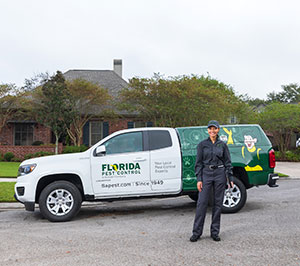Expert A1 Charlotte Bed Bug Exterminator - Top Quality Service Ensured
Expert A1 Charlotte Bed Bug Exterminator - Top Quality Service Ensured
Blog Article
Bed Insect Treatment Breakdown: Comparing Chemical Vs. Non-Chemical Solutions
In the world of bug control, specifically when handling the relentless concern of bed pests, the option between chemical and non-chemical treatment options can be a pivotal one. Both techniques provide distinctive advantages and drawbacks, affecting variables such as effectiveness, safety factors to consider, and overall price. By checking out the nuanced details of each method, a more clear understanding of which course to pursue in attending to a bed bug invasion can be obtained.
Efficiency of Chemical Therapies
Chemical therapies for bed pest invasions have been widely acknowledged for their potent and quick efficiency in eradicating these bugs. When considering the effectiveness of chemical treatments, it is important to understand that they can offer a detailed and quick remedy to a bed pest trouble.
Additionally, chemical treatments have the benefit of offering recurring results, implying that they can proceed to remove bed insects even after the initial application. This recurring action is particularly advantageous in combating any type of possible re-infestations. In addition, the quick action of chemical treatments can bring alleviation to people dealing with severe bed insect infestations, permitting them to restore control of their home quickly.
Security Problems With Chemical Solutions
One critical element that needs careful factor to consider when making use of chemical remedies for bed insect treatment is making certain the safety of occupants and the atmosphere. While chemical therapies can be reliable in eliminating bed insects, they might present risks if not handled effectively. Among the key safety interest in chemical services is the prospective harm they can create to human health. Exposure to specific chemicals used in bed pest therapies can bring about breathing concerns, skin irritability, or other unfavorable reactions, particularly in people with pre-existing conditions or sensitivities. In addition, improper application or dose of chemical pesticides can result in hazardous deposits lingering in the cured area, presenting long-lasting health and wellness risks to residents.
Furthermore, the ecological effect of chemical remedies is one more considerable consideration. Some pesticides utilized in bed bug treatments might be hazardous to valuable pests, wildlife, and communities if they leach into the dirt or water supply. It is vital to utilize chemical therapies judiciously, complying with safety and security standards, and thinking about much less poisonous choices to minimize these dangers and make sure the safe and efficient management of bed pest infestations.
Advantages of Non-Chemical Techniques
Thinking about the potential safety issues and environmental effect connected with chemical remedies for bed pest therapy, checking out non-chemical approaches provides an appealing option with a number of distinct benefits. Non-chemical treatments are environmentally pleasant, as they do not add to air or water air pollution, making them a sustainable option for pest control.
Additionally, non-chemical solutions can be efficient in targeting bed pests, including hard-to-reach locations where chemical treatments might not penetrate. Approaches such as heat therapy, vacuuming, heavy steam cleaning, and bed mattress coverings supply comprehensive obliteration without the use of harmful chemicals. In addition, non-chemical strategies can be much less disruptive, requiring very little prep work and enabling quicker reentry into dealt with areas. Generally, selecting non-chemical bed insect treatment methods not just focuses on safety and security and find out here now environmental management however also ensures effective and thorough bug control.
Limitations of Non-Chemical Treatments

Furthermore, my site non-chemical therapies frequently require multiple applications to achieve successful removal. This can be taxing and may not constantly guarantee complete removal of all bed insects and their eggs, especially in hidden or hard-to-reach locations.
In addition, the success of non-chemical therapies heavily relies upon appropriate implementation and thoroughness, which can be testing for individuals without expert experience. Inadequate application of non-chemical approaches may cause insufficient eradication, bring about persistent invasions and the demand for extra treatments.
Consequently, while non-chemical treatments have their advantages, it is important to recognize these restrictions and consider them when establishing the most effective method for taking care of bed insect problems.
Price Comparison: Chemical Vs. Non-Chemical Options
Offered the restrictions connected with non-chemical treatments, an essential aspect to evaluate in the context of bed bug management is the price comparison in between chemical and non-chemical alternatives. In comparison, non-chemical treatments like heat treatment or vapor can be more costly, with expenses varying from $1,000 to $6,000 for an entire home. While the initial cost of chemical treatments may seem lower, several treatments may be called for to completely eliminate the infestation, possibly increasing the general expense.
Conclusion

Taking into consideration the prospective security problems and ecological effect connected with chemical services for bed insect treatment, discovering non-chemical methods offers an encouraging option with several unique benefits.Provided the constraints associated with non-chemical treatments, an essential aspect to examine in the context of bed bug administration is the price comparison in between chemical and non-chemical options. In comparison, non-chemical treatments pest proofing services like warm treatment or heavy steam can be much more expensive, with expenses varying from $1,000 to $6,000 for an entire home. While the first price of chemical treatments might seem lower, several treatments may be required to completely remove the invasion, potentially increasing the overall cost.In final thought, when comparing chemical and non-chemical bed pest therapy choices, it is necessary to think about efficiency, safety, advantages, restrictions, and cost.
Report this page